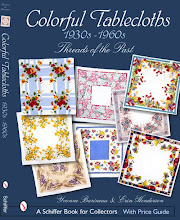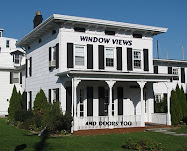
This past Saturday, the 8th of August I decided to take a trip to Natural Bridge. With all the rains we have had this summer, I was thinking lots of green and water. I was not disappointed. Natural Bridge is located in Rockbridge County, off Interstate 80 traveling north, at exit 175. It is about 31 miles from my home.

It is 137 steps from the visitor center to the bottom where the Cedar Creek and Natural Bridge are located. One can either walk down the scenic stairway or take a shuttle bus. I opted for the stairway and enjoyed the beautiful tree canopy, vines, butterflies, birds and creek.

Along the path, there are benches and little niches where you can stop and take in the beautiful scenery all around you.

At the bottom of the stairway you come upon the creek and a path that leads you to Natural Bridge and beyond.
Natural Bridge is a geological formation in which Cedar Creek (a small tributary of the James River-pictured above) has carved out a gorge in the mountainous limestone terrain, forming an arch 215 ft (66 m) high with a span of 90 ft (27 m), see photograph below.

The bridge consists of horizontal limestone strata, and is the remains of the roof of a cave or tunnel through which the creek once flowed. It is crossed by a public road, U.S. Highway 11. There are fences on either side of the highway, blocking the view from the top of the bridge.
In 1774, Thomas Jefferson purchased 157 acres (635,000 m²) of land including the Natural Bridge from King George III of England for 20 shillings. Jefferson called the Bridge "the most Sublime of nature's works". Jefferson built a two-room log cabin, with one room reserved for guests, beginning its use as a retreat. While President, in 1802, he surveyed the place with his own hands. Many famous guests stayed here, including John Marshall, James Monroe, Henry Clay, Sam Houston, and Martin Van Buren.
Natural Bridge was one of the wonders of the new world that Europeans visited during the 18th and 19th centuries. Vacationing guests from all over the world took day trips from Natural Bridge on horseback or horse drawn carriages to explore the countryside. In 1833, a new owner erected the Forest Inn to accommodate the increasing number of people. The bridge had considerable notoriety during the 19th century.
I will share more of my trip with you in the weeks ahead. The trail took me about a mile in and there were many interesting sights along the way.
Natural Bridge has been designated a Virginia Historical Landmark and a National Historical Landmark.
Be sure to stop by our wonderful That's My World meme. We had over 100 participants last week. I personally enjoy visiting other blogs from around the world. Enjoy.
 The Saltpeter Cave lies beyond the Natural Bridge on the pathway to Lace Falls. It forms a large hole in the canyon wall. The cave is also the work of the past's flowing water and erosion.
The Saltpeter Cave lies beyond the Natural Bridge on the pathway to Lace Falls. It forms a large hole in the canyon wall. The cave is also the work of the past's flowing water and erosion. The contents of the cave became a valuable resource for ammunition during the War of 1812 and the Civil War 1861-65. Workmen made gunpowder from nitrates they mined and from bird and bat droppings. There are remains of the metal rail mine cart tracks leading down into the cave which is now closed.
The contents of the cave became a valuable resource for ammunition during the War of 1812 and the Civil War 1861-65. Workmen made gunpowder from nitrates they mined and from bird and bat droppings. There are remains of the metal rail mine cart tracks leading down into the cave which is now closed.







 The bridge consists of horizontal limestone strata, and is the remains of the roof of a cave or tunnel through which the creek once flowed. It is crossed by a public road, U.S. Highway 11. There are fences on either side of the highway, blocking the view from the top of the bridge.
The bridge consists of horizontal limestone strata, and is the remains of the roof of a cave or tunnel through which the creek once flowed. It is crossed by a public road, U.S. Highway 11. There are fences on either side of the highway, blocking the view from the top of the bridge.







































.jpg)

